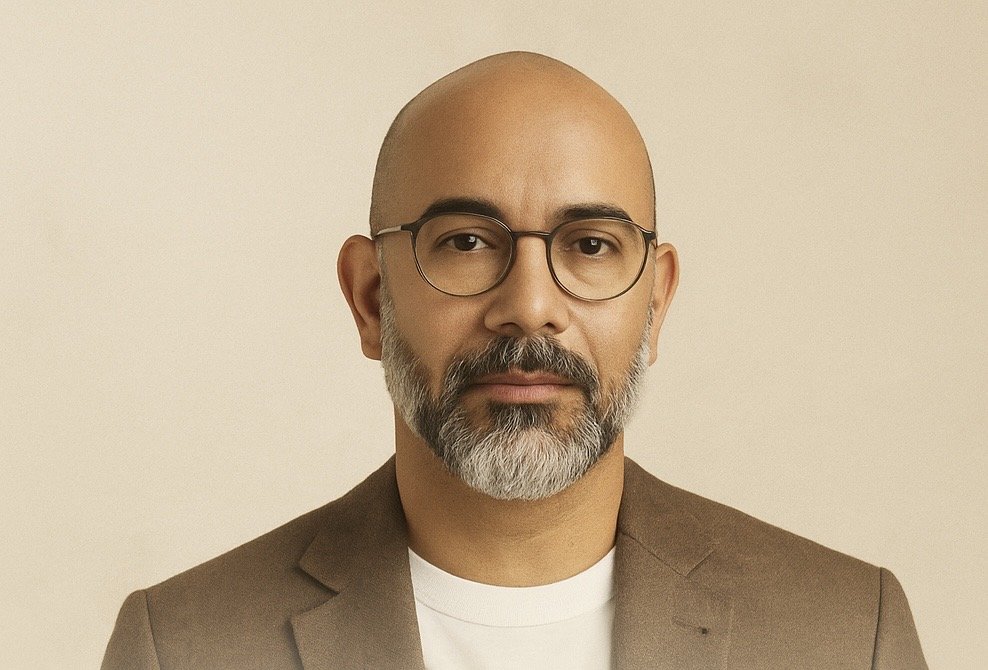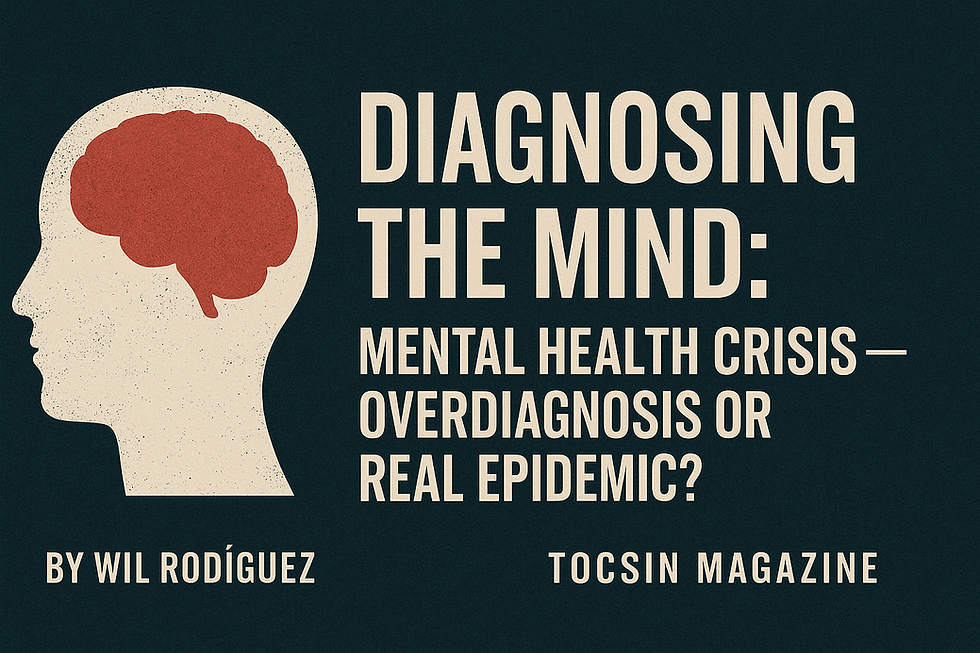Diagnosing the Mind
- Dr. Wil Rodriguez

- Aug 24
- 4 min read
Mental Health Crisis — Overdiagnosis or Real Epidemic?
By Wil Rodríguez, TOCSIN Magazine

The World at a Psychological Crossroads
We live in an era where conversations about mental health are everywhere — from TikTok videos to international conferences. Yet the abundance of discussion has not silenced the controversy. Is the world truly facing an unprecedented epidemic of mental illness, or have we simply widened the diagnostic net so much that normal sadness, stress, and worry are now labeled as pathology?
The stakes are enormous. Policies, school programs, and billions in pharmaceutical investments are shaped by this narrative. If the crisis is real, ignoring it costs lives. If it is largely overdiagnosis, we risk weakening resilience and wasting resources. Understanding this tension means digging into data, cultural contexts, and global comparisons that reveal a more complex truth.
The Case for a Real Epidemic
The Data Speaks Loudly
Global prevalence: Nearly 1 billion people worldwide (1 in 8) live with a diagnosable mental disorder (WHO, 2022).
COVID-19 effect: The pandemic triggered a 25% increase in anxiety and depression globally within a single year.
Youth in crisis: In the U.S., CDC surveys show 42% of high school students felt persistent sadness or hopelessness in 2021, the highest ever recorded.
Suicide rates: Over 700,000 deaths per year occur by suicide — that’s one every 40 seconds. Among people aged 15–29, it is the fourth leading cause of death worldwide.
Why Now? Structural Stressors Amplify Distress
Economic precarity: Rising inequality and unstable job markets feed chronic stress.
Digital life: Social media contributes to body image dissatisfaction, comparison anxiety, and cyberbullying. Studies link excessive screen time with higher depression risk.
Loneliness: In 2023, the U.S. Surgeon General declared an epidemic of loneliness and isolation, linking it to mental and physical decline.
Climate anxiety: Among Gen Z, surveys report that over 60% feel “very worried” about climate change, with significant impacts on mental health.
The verdict: The numbers are too stark to dismiss — something unprecedented is happening.
The Case for Overdiagnosis
The Expanding Diagnostic Universe
The DSM-5 lists over 300 disorders, compared to about 100 in its first edition in 1952.
Critics argue that this expansion pathologizes normal variation: grief lasting “too long” becomes major depressive disorder; a restless child may be labeled ADHD.
The Pharmaceutical Question
Global antidepressant sales exceed $15 billion annually, with ADHD medications nearing similar figures.
Skeptics warn that commercial interests push for “disease branding”: expanding definitions to expand markets.
Cultural Inflation of Language
Words like “trauma,” “triggered,” or “OCD” are used casually in everyday speech. This normalization risks blurring clinical severity with cultural slang.
Psychologists caution that when every challenge is described as pathology, the distinction between illness and human struggle erodes.
The verdict: Overdiagnosis doesn’t deny suffering but reframes much of it as misclassified or medicalized distress.
Global Comparisons: When Crisis Meets Culture
United States & Western Europe: High prevalence of diagnoses, high access to medication, and vocal debates about overdiagnosis.
Japan & South Korea: High suicide rates but strong cultural stigma. Many go undiagnosed, revealing the opposite problem: underdiagnosis masked by silence.
Sub-Saharan Africa: In most countries, over 75% of people with serious mental illness receive no care at all, pointing to a real epidemic of untreated suffering.
Latin America: Nations like Chile and Argentina have rising reports of depression and anxiety but underfunded healthcare systems, creating both diagnostic gaps and untreated illness.
Nordic Countries: Robust welfare states and accessible care reduce barriers, but paradoxically, reported levels of stress and anxiety remain high — perhaps reflecting societies more open to acknowledging distress.
Lesson: Whether we see “epidemic” or “overdiagnosis” depends as much on culture and infrastructure as on the disorders themselves.
The Paradox: Epidemic and Overdiagnosis Can Coexist
Both narratives can be true:
Severe mental illness is rising in many populations, especially among youth and vulnerable groups.
At the same time, diagnostic categories and cultural adoption of mental health language have expanded so widely that everyday struggles are often mislabeled as clinical illness.
This paradox forces us to shift the question from “Is there a crisis?” to “What exactly is in crisis — the mind, the system, or both?”
Policy and Practice: Where Do We Go From Here?
Diagnostic Clarity
Re-examine criteria to ensure resilience, grief, and stress are not overmedicalized.
Structural Interventions
Address root causes: poverty, inequality, housing, social media regulation, and climate anxieties.
Tiered Care Models
Clinical care for severe, disabling conditions.
Preventive and community-based programs for subclinical distress.
Social and educational support for everyday stress.
Cultural Literacy
Teach societies to distinguish between serious illness and human struggle, without trivializing either.
Conclusion: Diagnosing Society Itself
Perhaps the mental health crisis is not only about minds but about modernity itself. The epidemic is real where suffering overwhelms care systems. Overdiagnosis is real where medicine substitutes for meaning, community, and resilience. Both reflect deeper fractures in how we live, connect, and value one another.
The true question is not whether the crisis is exaggerated, but whether we have the courage to face both truths simultaneously.
Reflection Box — by Dr. Wil Rodríguez
We often ask whether people are “too fragile” today, or whether society is “too harsh.” Both are true — and both are our responsibility. Overdiagnosis speaks to our hunger for quick answers; the epidemic speaks to wounds we refuse to heal at the roots. If we cannot learn to see suffering with nuance, we risk treating the wrong illness: not the mind, but the soul of society itself.
For more in-depth explorations of today’s most urgent cultural and social debates, visit TOCSIN Magazine.
Go to: tocsinmag.com







Comments